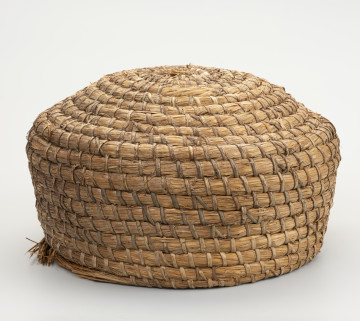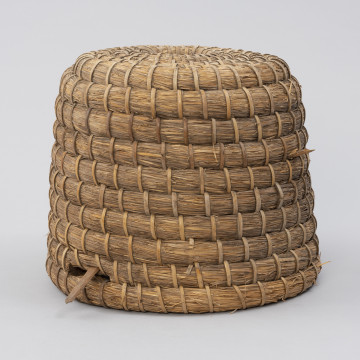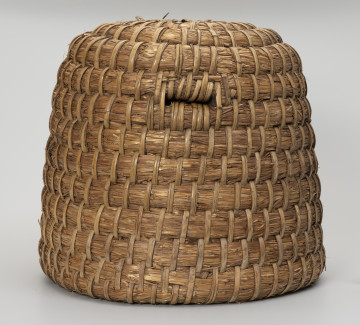
Skep (dome beehive)
1965
National Museum in Szczecin
Part of the collection: Beekeeping
Honey is a food product valued for its flavour and medicinal properties. People have sought to obtain it since the most ancient times. At first, they harvested the honey produced by wild bees, but over time people learnt to set up apiaries and then construct beehives. At the turn of the 17th and 18th centuries, skeps, woven out of straw, usually rye, were becoming popular. They were most often shaped like a bell or a dome with a hole serving as an entrance for the bees. Skeps did not have a bottom - they were placed on a flat surface, which provided a natural barrier for the hive. The making of skeps required a certain amount of skill - they had to be woven carefully to ensure that they were impervious to various atmospheric conditions. In modern beekeeping, geared to large-scale honey production, skeps are of no use. However, they do work well in organic farms and amateur apiaries. The ethnographic collection of the National Museum in Szczecin houses a dozen or so similar skeps. The featured object comes from the early 20th century and is quite large and cylindrical in shape. It has preserved the rungs inside, which provided support for the honeycombs. Agnieszka Słowińska
Author / creator
Object type
beehive
Technique
coiling (weaving)
Material
straw, wood, bast
Origin / acquisition method
purchase
Creation time / dating
Creation / finding place
Owner
Muzeum Narodowe w Szczecinie
Identification number
Location / status

1965
National Museum in Szczecin

1890 — 1910
National Museum in Szczecin

circa 1900
National Museum in Szczecin
DISCOVER this TOPIC
Museum of King Jan III's Palace at Wilanów
DISCOVER this PATH
Educational path